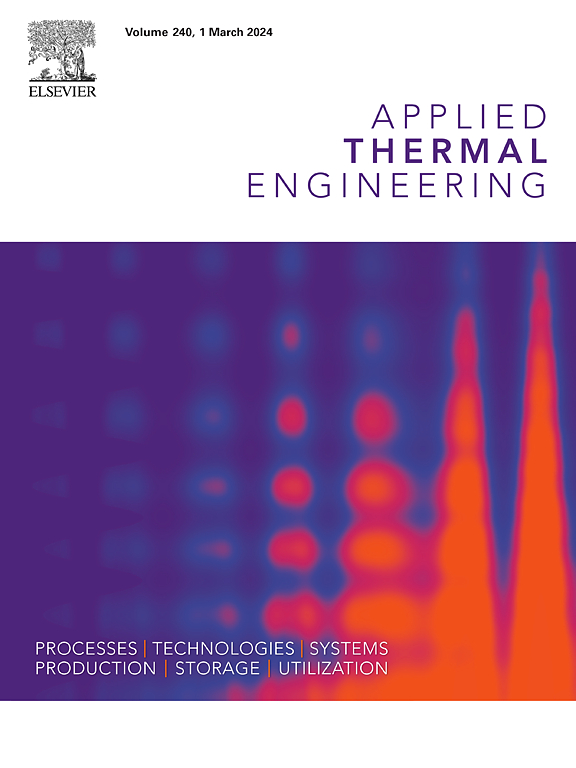轴向气体注入潜热堆积床热能储存系统的热性能研究
IF 6.1
2区 工程技术
Q2 ENERGY & FUELS
引用次数: 0
摘要
潜热堆积床热能存储系统在工业余热回收和太阳能热能收集方面具有广阔的应用前景。本研究提出了一种轴向气体喷射的新型设计,用于煅烧钙钛矿过程中的余热回收。部分传热流体从主入口转移到轴向入口,由于流速下降和温差升高,传热效果增强。与传统设计相比,轴向气体注入可立即提高温度均匀性,温差最大可降低 64 K,从而减少热引起的损坏,提高设备安全性。轴向设计还可将充电效率提高 21%,充电效率随轴向入口数量的增加而提高。进一步的研究表明,充电效率与孔隙率成反比,当孔隙率从 0.5 降至 0.3 时,充电效率在充电结束时提高 15%,而往返效率则相反。此外,对传热流体的研究表明,质量流量增加会导致装料效率降低,而往返效率提高,这是由于熵产生增加和传热速率提高所致。对于专用应用,需要根据热性能、安全性和特定要求对填料床进行优化。本文章由计算机程序翻译,如有差异,请以英文原文为准。
Thermal performance investigation of latent heat-packed bed thermal energy storage system with axial gas injection
The latent heat-packed bed thermal energy storage system has a broad application prospect in industrial waste heat recovery and solar thermal energy collection. In this work, a novel design with axial gas injections is proposed with the examination for waste heat recovery from the spodumene calcination process. Part of the heat transfer fluid is diverted from the main inlet to the axial inlets, which leads to heat transfer enhancement due to flow rate drop and elevated temperature difference. Compared to the conventional design, axial gas injection leads to an immediate enhancement in temperature uniformity, with a maximum of 64 K decrease in temperature difference, which could reduce thermally induced damage and improve device safety. The axial design also leads to increased charging efficiency by up to 21 %, with the charging efficiency increasing with the number of axial inlets. Further investigation shows charging efficiency is inversely proportional to porosity, with porosity decreasing from 0.5 to 0.3, charging efficiency increases by 15 % at the end of charging, while the round-trip efficiency is on the contrary. Moreover, studies on heat transfer fluid show that elevated mass flow rate leads to decreased charging efficiency and improved round-trip efficiency, which is due to higher entropy generation and enhanced heat transfer rate. For a dedicated application, the packed bed needs to be optimized depending on the thermal performance, safety, and given requirements.
求助全文
通过发布文献求助,成功后即可免费获取论文全文。
去求助
来源期刊

Applied Thermal Engineering
工程技术-工程:机械
CiteScore
11.30
自引率
15.60%
发文量
1474
审稿时长
57 days
期刊介绍:
Applied Thermal Engineering disseminates novel research related to the design, development and demonstration of components, devices, equipment, technologies and systems involving thermal processes for the production, storage, utilization and conservation of energy, with a focus on engineering application.
The journal publishes high-quality and high-impact Original Research Articles, Review Articles, Short Communications and Letters to the Editor on cutting-edge innovations in research, and recent advances or issues of interest to the thermal engineering community.
 求助内容:
求助内容: 应助结果提醒方式:
应助结果提醒方式:


